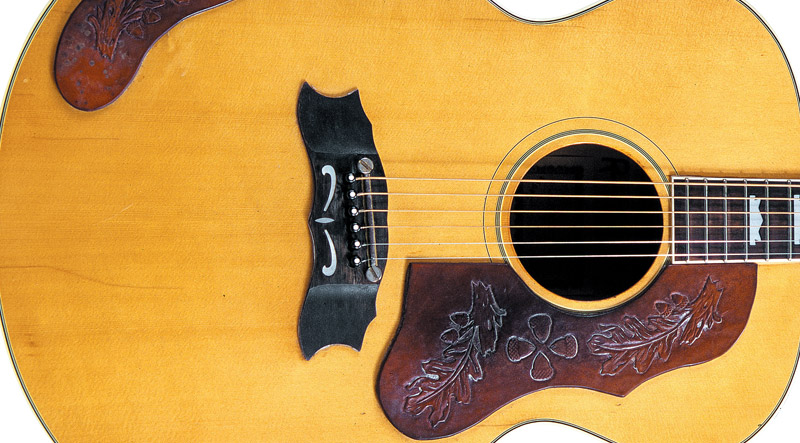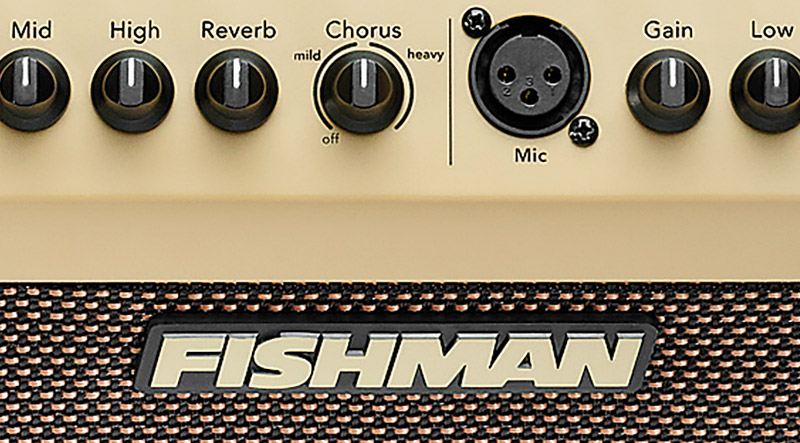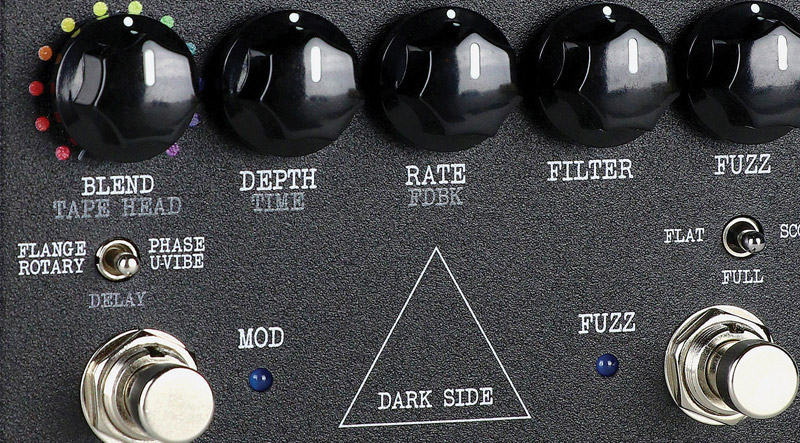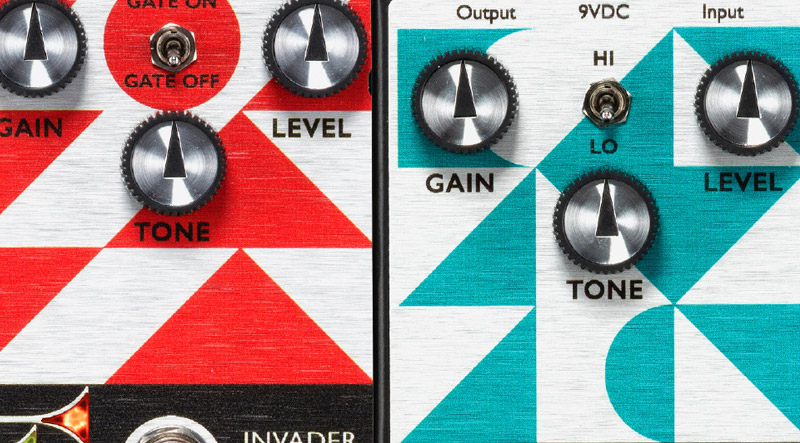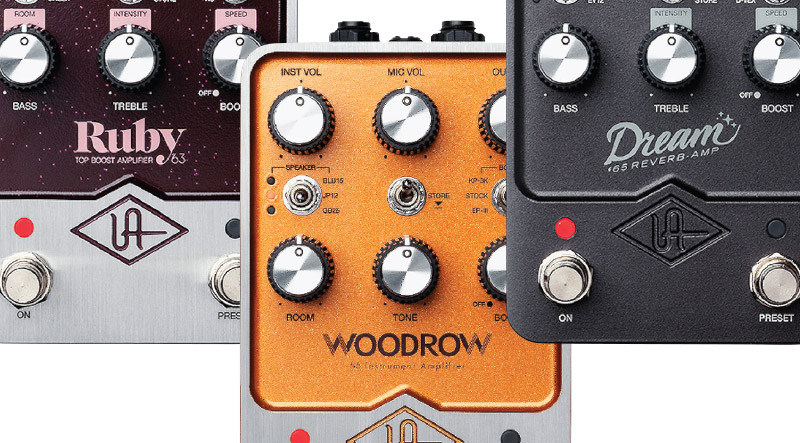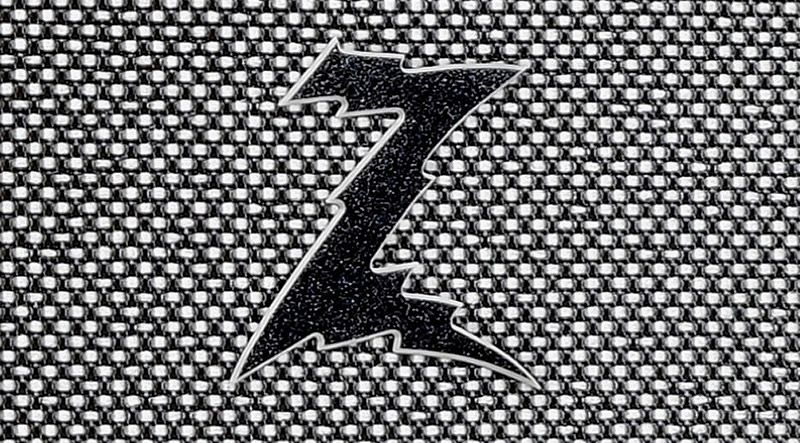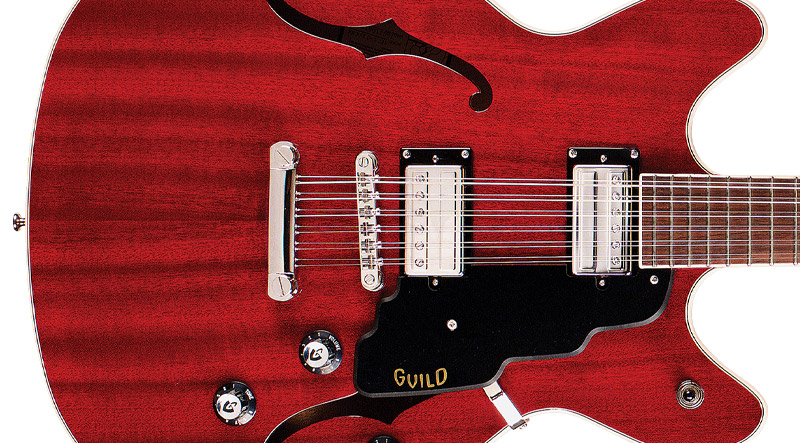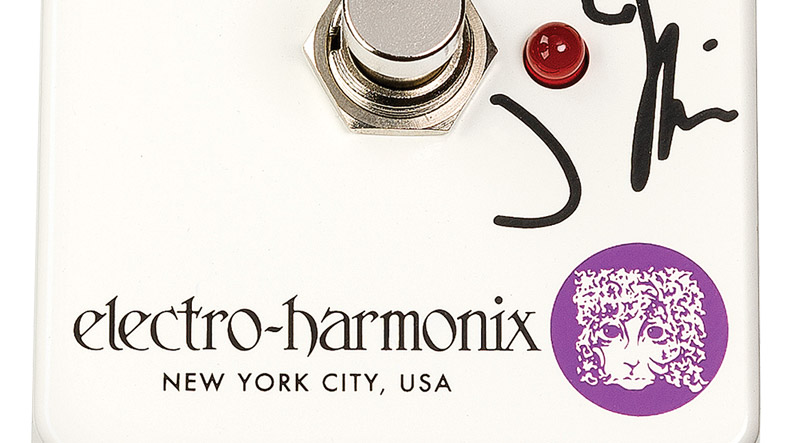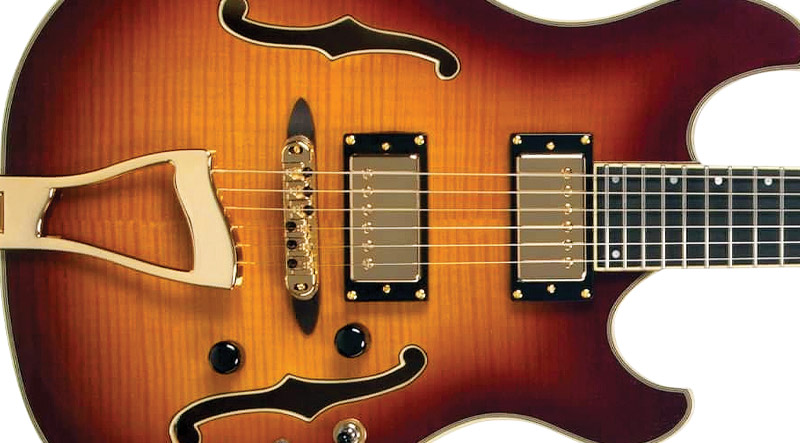
The 1970s is often called “the Copy Era” for the dominating presence and spectacular success of Japanese “copies” of popular American guitars, most notably of the Gibson Les Paul. Indeed, it was with these “copies” that many Japanese manufacturers honed their chops and became world-class guitar makers. In fact, it was a lawsuit filed by Norlin (Gibson) against Elger (Ibanez) over trademark infringement (headstock copying) in Philadelphia in the summer of 1977 that gave us the now-ubiquitous term “lawsuit guitar.” But when you look a little closer, Japanese guitars from this period were about way more than copying. Many were quite whimsical and some very innovative. One of the former can be seen in this circa 1975 Penco Model A-15-JD.
Basically, this Penco is a “copy” of a Gibson J-200 or Super Jumbo, a giant of a guitar burned into our minds with twin pickguards in the hands of the Everly Brothers or dwarfing the golden-throated Emmy Lou Harris. Introduced in 1937-’38, the Super Jumbo was the culmination of what might be called guitar “size wars.” In the mid 19th century, when American guitar making began, guitars were typically about 10″ wide at the lower bout. As the guitar became more popular, its girth gradually expanded. By the end of the century, a “standard” guitar was around 12″ wide and auditorium guitars could reach 14″ wide. Right around World War II, Washburn introduced a jumbo guitar with a 16″ lower bout, followed by the first Martin dreadnoughts made for Boston’s Ditson (1916). Guitars continued to escalate. Gibson’s jumbo topped that in the late ’30s and eventually settled in at 17″. It was this hefty flat-top that was given the flattery of imitation in this magnificent Penco guitar.
Penco was one of those regional brand names that proliferated in the ’70s. Back then, America had not yet been franchised by national-chain music stores. Instead, regions were served by large local distributors that often owned regional chains, but also served mom-and-pop music stores in the area. It was not uncommon for these distributors to have their own “house brands,” as they’ve become known, a proprietary brand name put on guitars supplied by the company building them. Through the ’60s, these were likely to have come from the Harmony, Kay, or Valco factories. As Japanese imports began to flood the market in the late ’60s, American manufacturers began to suffer. In ’68, Valco-Kay, which had merged the year before, went belly up, opening the field to the Japanese (European guitars had largely gotten too expensive by then).

The Penco name was employed by Philadelphia Music Company, of Limerick, Pennsylvania, a sleepy rural town northwest of Philly best known as the location of a nuclear power plant. Run by the brothers Fred and Ralph Baas, Philadelphia Music had a number of stores throughout the area. However, it is best remembered as the importer of Framus guitars from Germany, which it distributed nationally. As part of this relationship with Framus, Philadelphia Music was responsible for launching the careers of luthiers Sam Koontz and Eric Schulte as well as the American presence of Bill Lawrence, a.k.a. Billy Lorento.
Framus, like most other European guitars (except for Hagstrom), had ceased to be much of a player in the U.S. by the 1970s. Philadelphia Music replaced Framus with Japanese-made Pencos as its budget brand. Because it was largely a regional brand, Pencos are not especially plentiful and, not surprisingly, usually show up in the Philly area. Typically they are the same as other regional brands, such as Bradley, made for Kope Venemann of KAPA guitars in Maryland and sold in Baltimore/Washington D.C. Most were of decent quality, like the Model A-15-JD.
As with most Japanese acoustic guitars from the ’70s, this guitar has laminated woods. Guitarists generally prefer solid timbers, but laminated shouldn’t be equated with the cheap “plywood” you get at Home Depot. Lamination is typically two or three plies that create a strong, stable component, allow the builder to use a fancy outer veneer, and still sell at a budget price. This has a laminated spruce top with a nice, booming sound. As is often the case with laminated tops, the sound is good but sustain suffers, which is only a problem if your style demands sustain.
Interestingly, the sides of this guitar are also laminated spruce, a very unusual design. The back is faced with flamed maple with a nice color marquetry strip down the middle seam. The glued-in neck is three pieces of maple glued at cross grain for stability, with a rosewood fingerboard and real pearl inlays. As you can see, everything is bound. The hardware is typical ’70s Japanese, but if you were going to play this, you’d change the tuners.
As you would expect, this has the Gibson-style mustache bridge, but the similarities begin to diverge there. Beyond the spruce sides, the most distinct departure here is the tooled leather pickguard and arm-rest. Way cool! How much this does to enhance the sound is unclear, but put on a rawhide jacket with fringes on the sleeves and you’re ready to play a country-rock hoedown!
It’s a pretty safe bet this is from 1975. It has two numbers inside, 1407Z and 750401, and the latter looks to be date encoded. Japanese guitar makers began using serial numbers right around this time. Plus this has the Gibson-style headstock. By 1976, with rumors of a pending lawsuit flying throughout the guitar-importing community, headstocks began to change to more original designs, although acoustics tended to lag electrics in this changeover. By ’78, almost all “copies” were gone and even acoustics were emphasizing features such as brass fittings, which distinguished them from popular American designs.
In any case, this natty Penco is a fine example of a “copy” that pushed the envelope, marking a special point in time in American – and Japanese – guitar history! And it’s pretty cool, to boot!
This article originally appeared in VG‘s December 2009 issue. All copyrights are by the author and Vintage Guitar magazine. Unauthorized replication or use is strictly prohibited.

